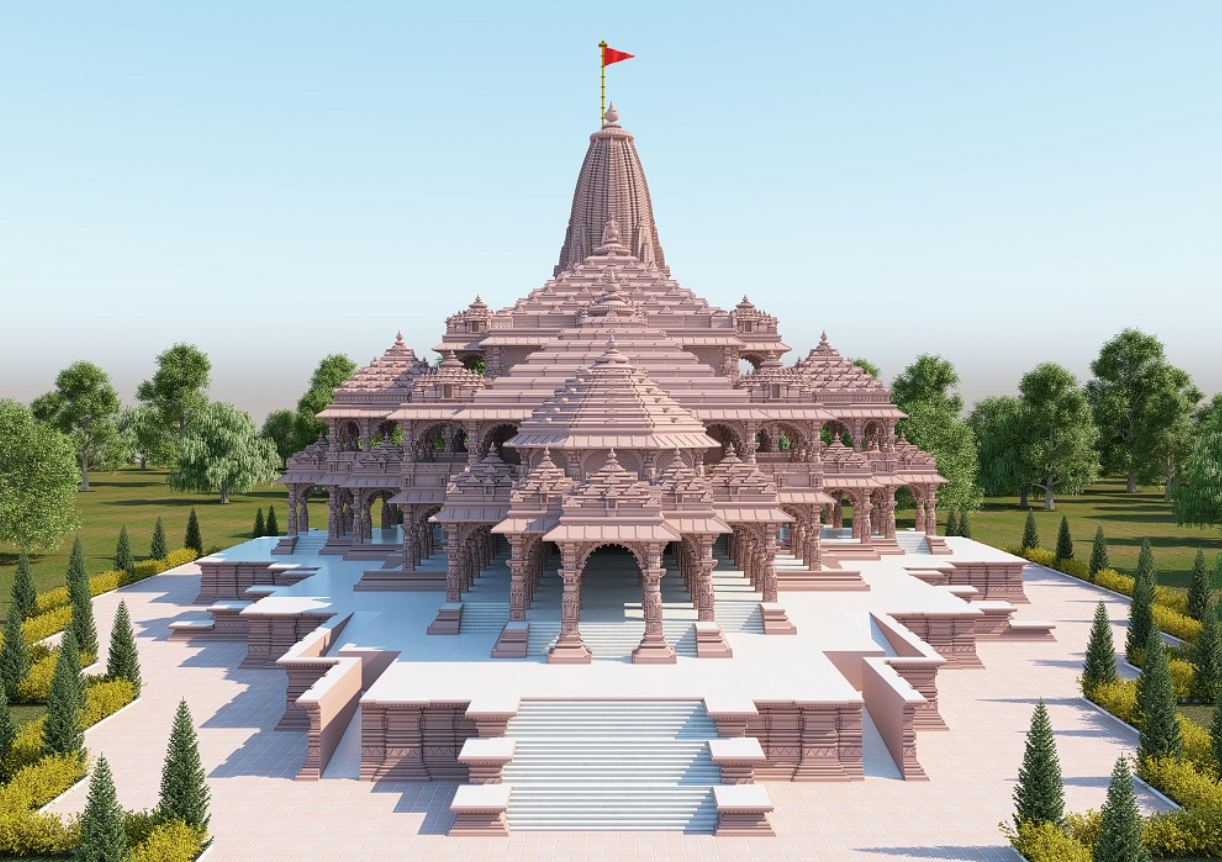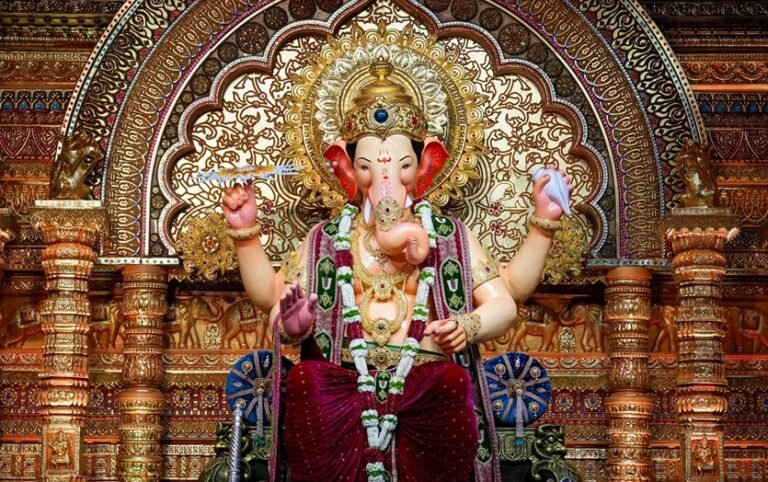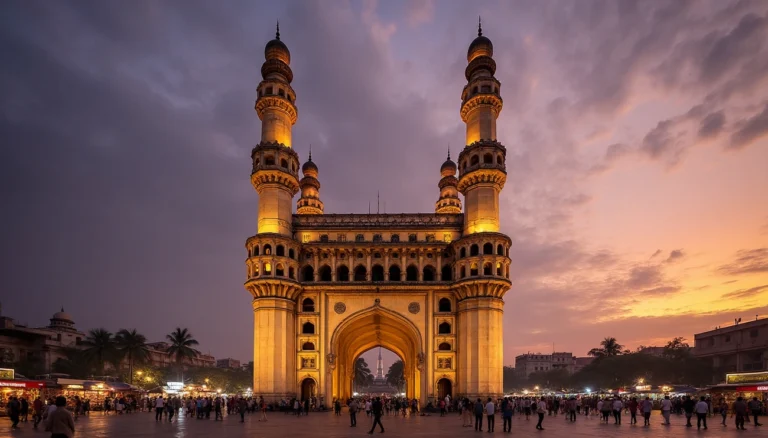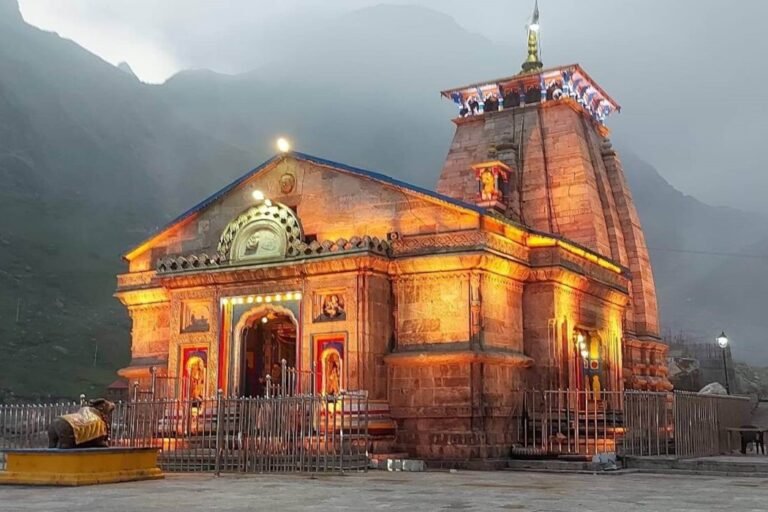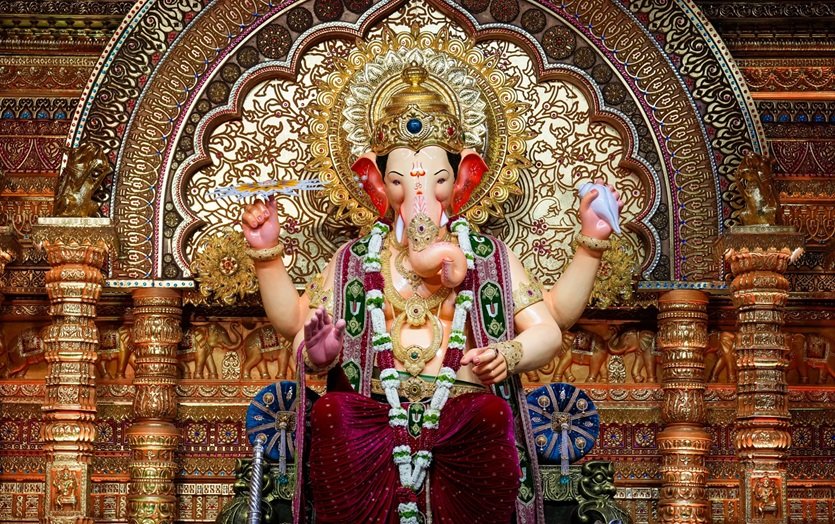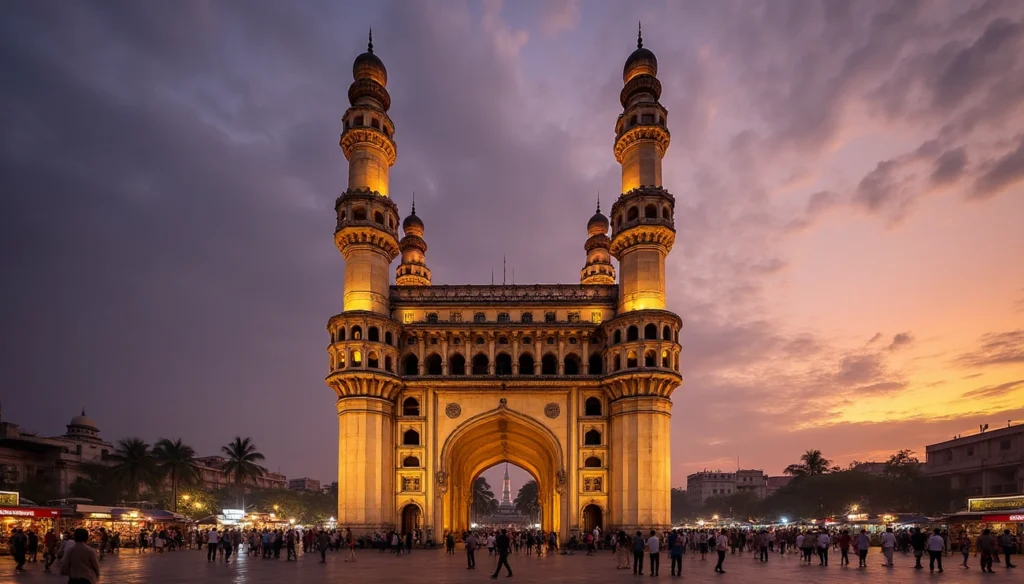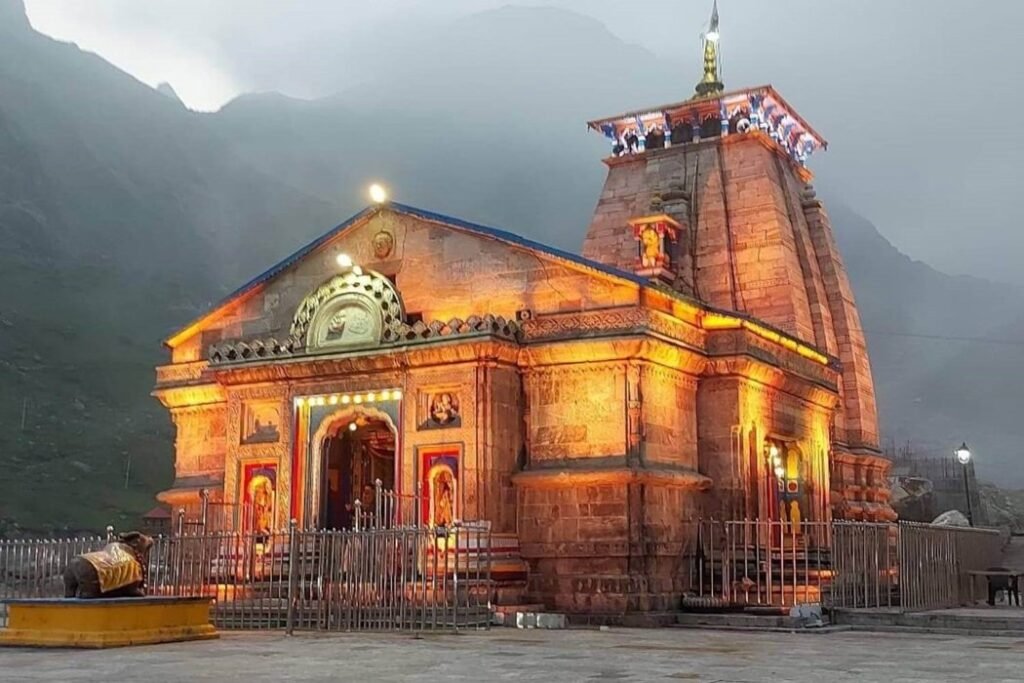For centuries, the holy city of Ayodhya in India pulsed with a yearning, a silent prayer etched in the hearts of millions. It was the longing to see a grand temple grace the very spot believed to be the birthplace of Lord Rama, the revered deity venerated in the epic Ramayana. This yearning, steeped in faith and history, culminated in a landmark moment in 2019 – the Supreme Court of India paved the way for the construction of the Ayodhya Ram Mandir.
This wasn’t just a legal victory; it was the culmination of a decades-long saga, a tapestry woven with threads of devotion, resilience and hope. The Ram Janmabhoomi, the very birthplace of Lord Rama, had been a contentious site for centuries, marred by conflict and controversy. But amidst the darkness, the flame of faith flickered, kept alive by generations of devotees who refused to let the dream of a Ram Mandir die.
Today, that dream is rising from the ashes of the past. The Shri Ram Janmabhoomi Teerth Kshetra Trust, formed to oversee the construction, is working tirelessly to bring this magnificent vision to life. The temple, being built with meticulous attention to detail and traditional architectural principles, promises to be a stunning tribute to Lord Rama and a beacon of faith for millions.
A Glimpse into the Divine Abode:
- Architectural Majesty: The Ram Mandir in Ayodhya will be a three-storied structure, adorned with intricate carvings and sculptures depicting scenes from the Ramayana. Rajasthani sandstone, known for its durability and aesthetic appeal, will be the primary building material.
- Spreading Devotion: The temple complex will encompass over 100 acres, housing various shrines, pilgrimage facilities and educational institutions. It aims to be a holistic center for spiritual growth and cultural immersion.
- Sustainability at its Core: The construction incorporates eco-friendly practices, rainwater harvesting, and solar energy solutions, setting a benchmark for sustainable development in religious architecture.
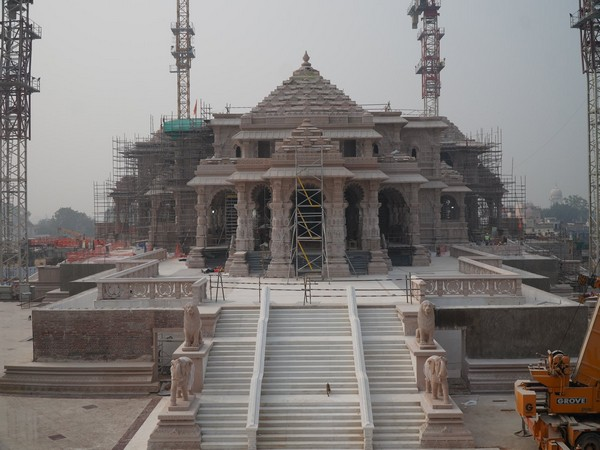
Photo : Twitter (Credits: X/ @ANI)
Beyond Bricks and Mortar:
The Ayodhya Ram Mandir is much more than just a physical structure. It is a symbol of unity, a testament to the enduring power of faith and a harbinger of hope. It represents the triumph of good over evil, the unwavering spirit of millions who refused to let their dream die.
The construction of the Ram Mandir is not just about bricks and mortar; it’s about building bridges of understanding and harmony. It’s a beacon of hope for a future where faith unites, not divides, and where the spirit of inclusivity prevails.
Visiting the Ayodhya Ram Mandir:
While the main temple is still under construction, a temporary structure called the Ram Lalla Virajman Mandir has been erected on the premises, allowing devotees to offer their prayers to Lord Rama.
Here are some tips for planning your visit to Ayodhya and the Ram Mandir:
- Best time to visit: The winter months (October to March) are pleasant, with comfortable temperatures. However, Ayodhya can get quite crowded during major Hindu festivals like Diwali and Ram Navami.
- How to reach: Ayodhya is well-connected by air, rail and road. The Ayodhya Airport is just a few kilometers from the city center and several major train stations serve the city.
- Where to stay: A wide range of accommodation options are available in Ayodhya, from budget-friendly guesthouses to luxurious hotels.
- What to see and do: Besides the Ram Mandir, Ayodhya has several other religious sites worth visiting, such as the Kanak Bhavan, Hanuman Garhi and Nageshwarnath Temple. You can also enjoy boat rides on the Saryu River or explore the local markets.
A Journey of Faith:
A visit to Ayodhya and the Ram Mandir is more than just a pilgrimage; it’s a journey of faith, a chance to connect with a rich cultural heritage and to witness the power of collective belief. As the magnificent temple rises towards the sky, it leaves us with a profound message: even the most cherished dreams can come true, fueled by unwavering faith and unwavering hope.
A Divine Invitation: Unveiling the Ram Mandir’s First Look
Across India, hearts pulse with anticipation and eyes well up with emotion. After decades of yearning, the wait is finally over. The first glimpse of the invitation card for the Ayodhya Ram Mandir’s consecration ceremony has been revealed, and it’s a sight to behold.
Embossed with golden letters on rich saffron paper, the invitation carries more than just logistical details. It’s a tangible manifestation of a dream held close by millions, a promise whispered through generations. Let’s delve into the intricate beauty and profound symbolism etched onto this historic invitation.
#WATCH : First look of Ayodhya Ram Mandir invitation card for consecration ceremony#RamMandir #Rammandirinvitation #InvitationCard #Ayodhya pic.twitter.com/RU8NBzR5Iy
— upuknews (@upuknews1) January 4, 2024
A Journey Home:
The front page reads, “Auspicious Ceremony for Ram Lalla’s Return to his Original Seat at New Grand Temple Home.” This simple yet powerful statement encapsulates the essence of the occasion. It isn’t just about inaugurating a temple; it’s about Lord Rama reclaiming his rightful place, reuniting with his devotees in the very soil that witnessed his divine birth.
Etched in History:
The invitation chronicles the arduous journey leading to this momentous day. A timeline depicts the key milestones from the groundbreaking ceremony in 2020 to the consecration in 2024. Dates and events come alive, reminding us of the unwavering dedication and tireless efforts that brought this dream to fruition.
Divine Inspiration:
The card’s intricate design weaves in elements of traditional Hindu architecture. Delicate lotus motifs, a symbol of purity and divine grace, adorn the corners. The delicate border resembles Ram Darbar, Lord Rama’s celestial court, inviting the recipient to be a part of this grand celestial gathering.
A Call to Unity:
Beyond the visual splendor lies a deeper message. The invitation is addressed to not just individuals, but to the entire nation. It’s a call to celebrate togetherness, transcending differences in faith and background. The Ram Mandir stands as a beacon of hope, uniting millions under the banner of shared devotion and cultural heritage.
Witnessing History:
Receiving this invitation is more than just an honor; it’s a privilege to be a part of history in the making. The consecration ceremony promises to be an event etched in the annals of time, a testament to the enduring power of faith and collective aspirations.
Planning Your Pilgrimage:
As the date nears, excitement reaches a fever pitch. For those wishing to witness this historic event firsthand, preparations are underway. Booking travel and accommodation well in advance is crucial, for Ayodhya is expected to be flooded with devotees eager to be a part of this momentous occasion.
Beyond the Ceremony:
The Ram Mandir’s construction transcends the realm of bricks and mortar. It’s a symbol of resilience, a testament to the enduring power of faith, and a harbinger of hope for a future steeped in unity and harmony. The invitation is not just a ticket to a ceremony; it’s a call to embrace the spirit of inclusivity and celebrate the shared cultural heritage that binds us together.
So, whether you receive the invitation or witness the historic event from afar, remember, this is a moment to cherish. It’s a celebration of faith, a testament to perseverance, and a promise of a brighter future for India.
I hope this content is helpful! Please let me know if you have any other questions.

